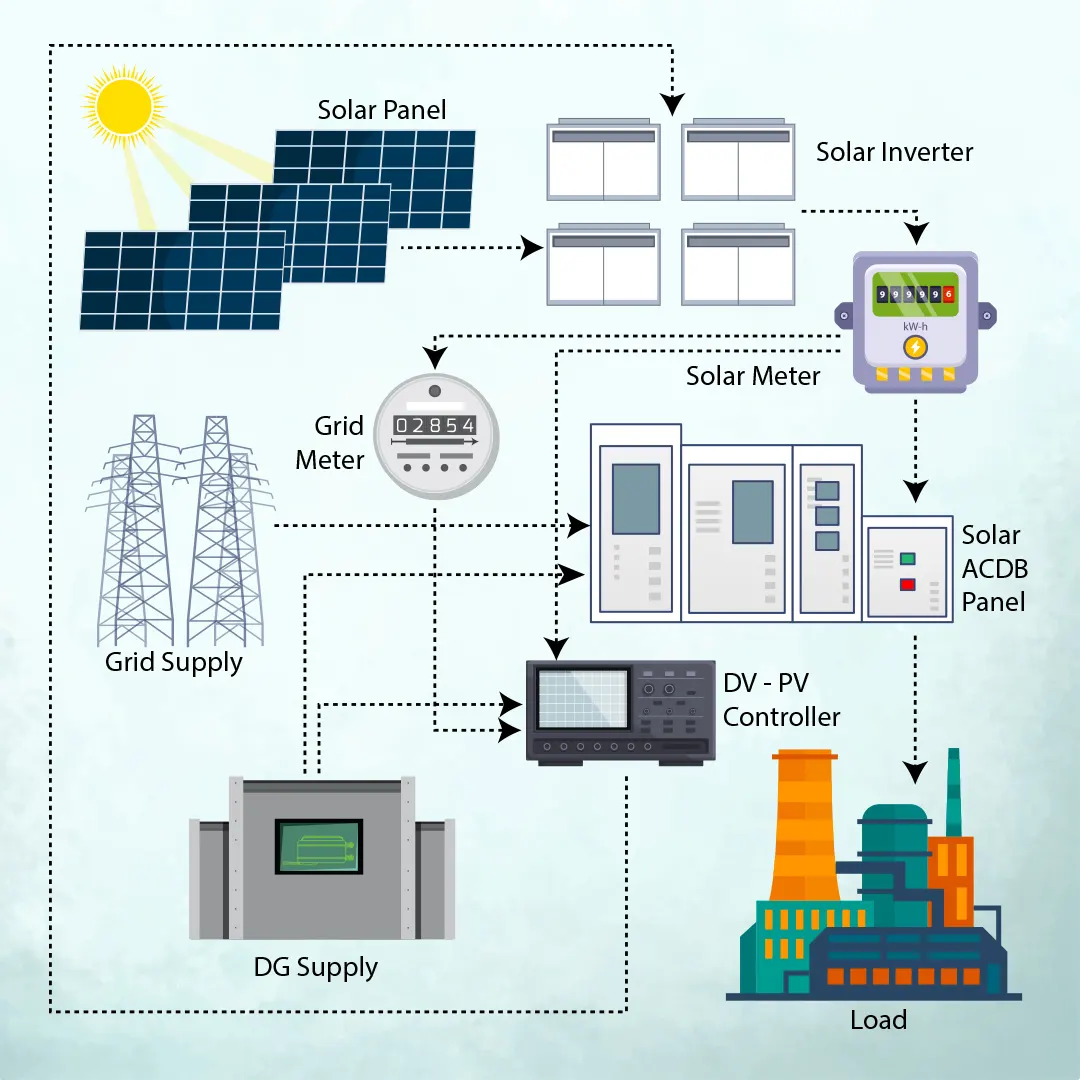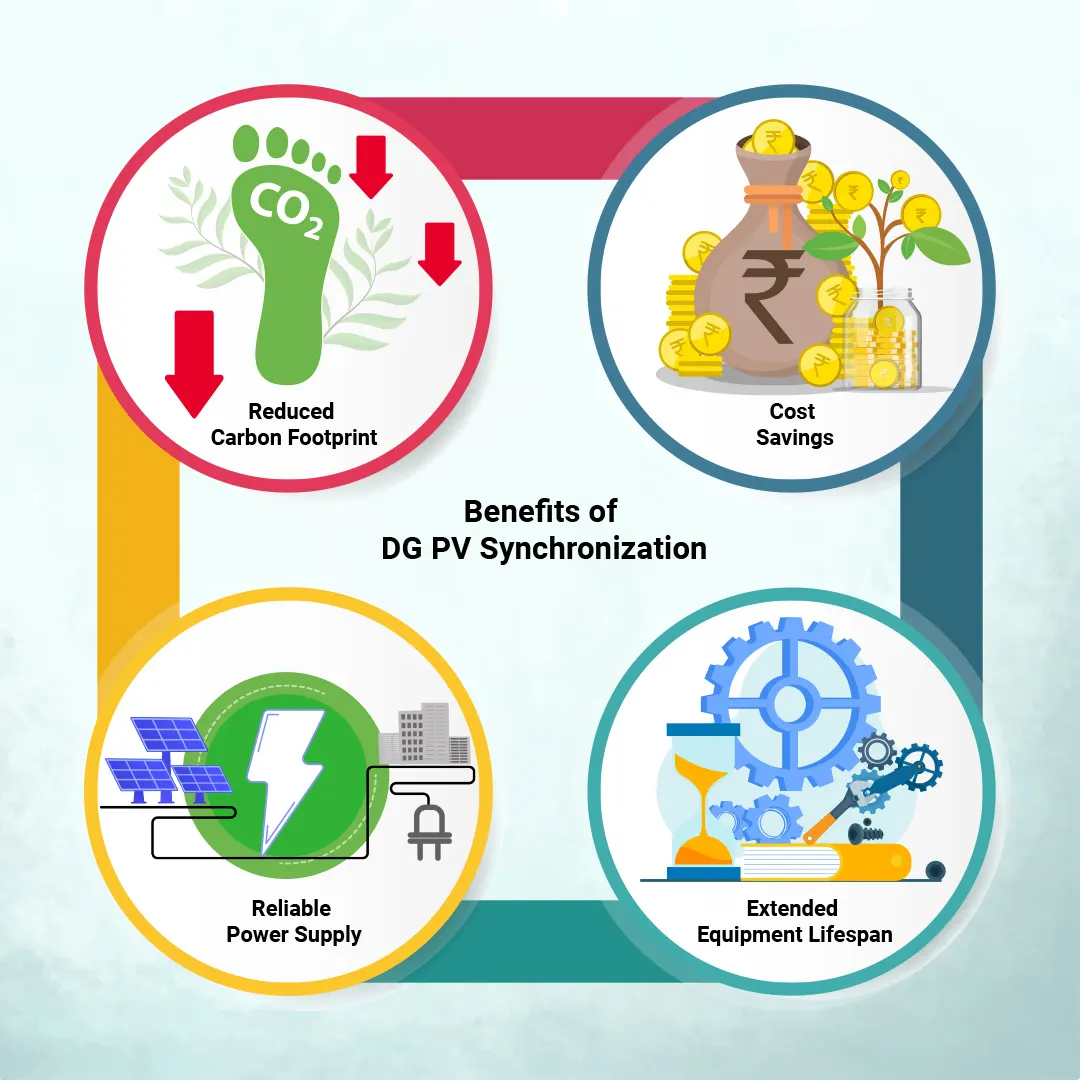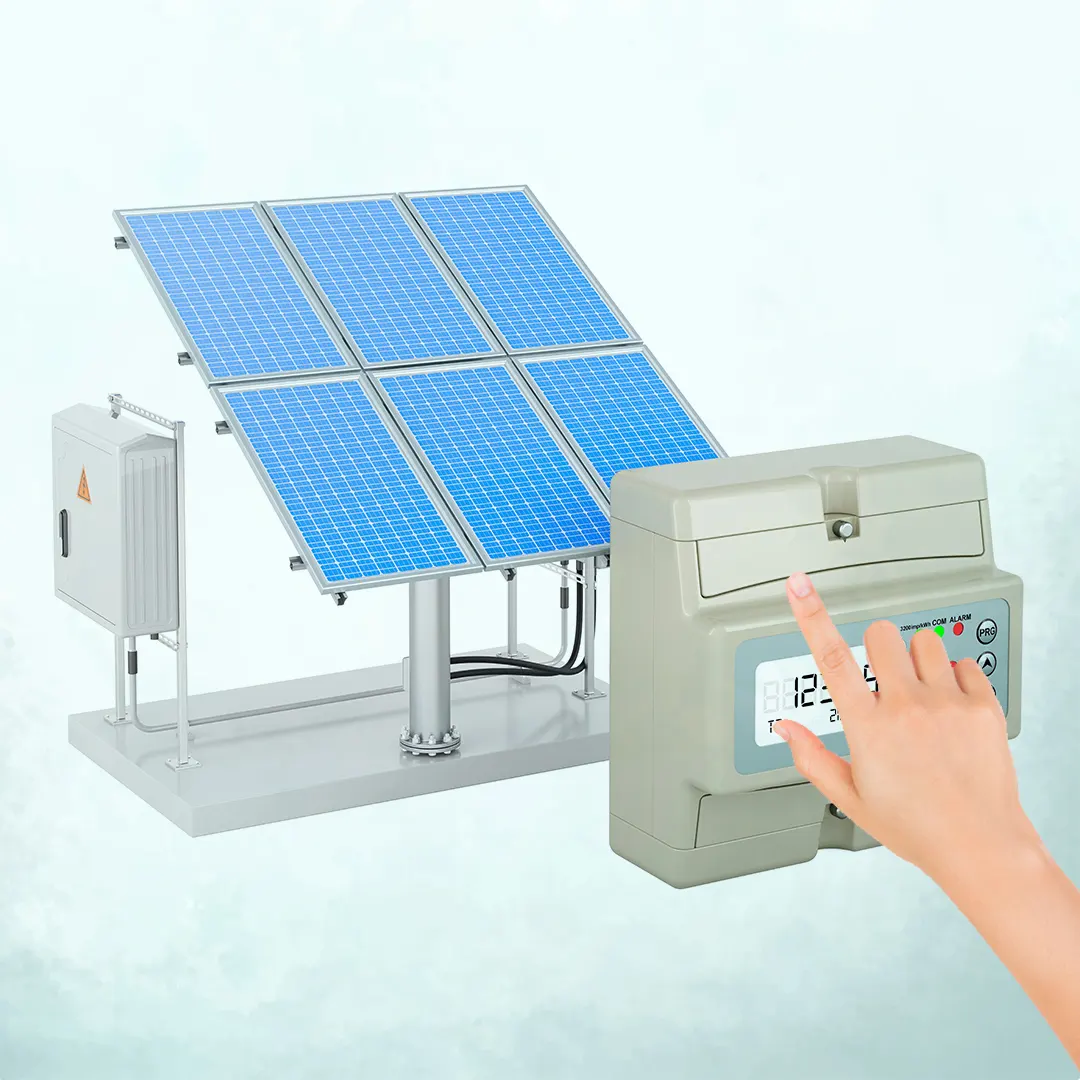
Discover how DG PV Synchronization Devices optimize solar power systems for seamless hybrid energy management and efficiency
As the world embraces renewable energy, solar power systems have emerged as a key solution to meet growing energy demands sustainably. However, integrating solar power with existing energy setups, especially diesel generators (DG), requires advanced technology to ensure efficiency and stability. The DG PV Synchronization Device plays a pivotal role in hybrid energy systems, harmonizing solar PV modules with DG systems for reliable and cost-effective energy management.
What is DG PV Synchronization?
A DG PV synchronization device is a specialized controller that ensures seamless integration between a solar inverter and a diesel generator (DG). Typically connected to the local grid, this system is an ideal solution for rooftop solar plants , allowing efficient hybrid energy management.

Key Features and Functions
Power Generation Based on Demand: The device ensures solar plants adjust their power output according to energy requirements or the connected load.
Optimizing DG Usage: The system is designed to keep the DG operating at minimal load while maximizing solar energy utilization.
Core Areas of Synchronization
For effective operation, the DG PV synchronization system aligns with the power grid in three critical aspects:
Voltage: Ensures consistent energy output without fluctuations.
Frequency: Matches the grid frequency to prevent disruptions.
Phase Angle: Aligns the phase angle for smooth power transfer.
Importance of Proper Synchronization
Proper synchronization guarantees safe and efficient current transfer, avoiding power instability. Any mismatch in voltage, frequency, or phase angle can lead to severe consequences, such as power grid damage or harm to your solar panels. By maintaining synchronization, the system enhances both performance and durability.
Importance of DG PV Synchronization in Solar Power Systems
Hybrid power systems bridge the gap between renewable energy and traditional energy sources. DG PV Synchronization Devices are instrumental in:
Enhancing Energy Efficiency: Maximizing the use of solar energy generated by photovoltaic panels.
Reducing Operational Costs: Lowering fuel consumption and maintenance expenses.
Promoting Renewable Energy: Encouraging the transition to sustainable energy solutions through solar module manufacturers .
How Does the DG PV Synchronization Device Work?
On-grid inverters typically rely on a reference voltage from the power grid. In cases where grid power is unavailable, a diesel generator can serve as an alternative reference source. However, specific conditions must be met to ensure compatibility and efficiency. Unlike a grid, surplus solar energy cannot be fed back into a generator, as it is not designed to receive power input. To overcome this limitation and optimize performance, a diesel generator must operate at a minimum of 30% of its capacity.
Role of the DG PV Synchronizer
The DG PV Synchronizer is an intelligent device that enables seamless communication between the diesel generator and the solar inverter. It ensures that:
The generator operates at or above 30% of its capacity before allowing the PV system to generate power.
Excess solar energy is prevented from back-feeding into the generator, thereby acting as a zero-export device.
Example Scenario
If a diesel generator has a capacity of 100kW and the connected demand is also 100kW, the DG PV Synchronizer ensures that 30kW of this demand is supplied by the generator. The remaining 70kW is efficiently met by solar panels, ensuring optimal fuel savings and operational efficiency.
This synchronization mechanism not only prevents damage to the generator but also enhances the reliability of the hybrid system during grid outages.

Benefits of DG PV Synchronization
1. Reduced Carbon Footprint: By prioritizing solar energy, these devices significantly lower greenhouse gas emissions.
2. Cost Savings: Minimizing diesel generator usage reduces fuel and maintenance costs.
3. Reliable Power Supply: Hybrid systems powered by DG PV synchronization ensure uninterrupted electricity, even in remote locations.
4. Extended Equipment Lifespan: Reducing operational hours of diesel generators minimizes wear and tear.
Applications of DG PV Synchronization Devices
1. Commercial and Industrial Use: Industries benefit from lower energy costs and reduced emissions.
2. Remote Locations: Ideal for off-grid areas relying on diesel generators for primary power.
3. Agriculture: Powering irrigation pumps efficiently with hybrid systems, reducing dependence on fossil fuels.


Choosing the Right DG PV Synchronization Device
Selecting the right device involves considering:
Compatibility with Solar Panels: Ensure it supports modern monocrystalline solar panels and other advanced technologies.
Manufacturer Reputation: Opt for devices developed by reliable solar energy manufacturers.
Certifications and Testing: Verify that the device meets industry standards for quality and performance.
Visit our product page for top-quality solar modules range and contact us for expert guidance.
Wrapping Up
The DG PV Synchronization Device is an essential component in modern hybrid energy systems, bridging the gap between renewable energy and conventional power sources. By integrating solar PV modules with diesel generators, these devices ensure efficiency, cost savings, and environmental sustainability.
As one of the top solar panel manufacturers in India , we at PIXON are committed to delivering innovative renewable energy solutions. Discover our range of solar PV modules tailored to meet diverse energy needs.
FAQ Section
It integrates solar energy with diesel generators, optimizing energy usage and reducing costs.
Most modern devices are compatible with high-quality solar panels from leading photovoltaic panels manufacturers.
They maximize the utilization of solar energy, reducing dependence on fossil fuels and lowering carbon emissions.
Yes, they are widely used in industries to reduce operational costs and improve energy efficiency.